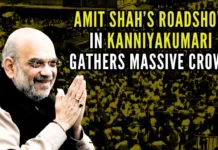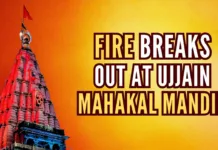
Call it an absurdity, provocative, outrageous or whatever but the biased authorities in the Government of Union Territory of Jammu and Kashmir (J&K) have done it without taking into consideration what impact their senseless action would have on the psyche of the minority community (in this case Hindu). Many may say it is unbelievable but it has actually happened much to the chagrin of the already rather suffering Hindu community, which constitutes over 40% of the J&K population and which has been contributing to the state exchequer almost 80% revenue every year and getting in return not even crumbs.
What exactly has happened? On May 11, 2021, a section of Turkish media carried a story on J&K. It was titled “Govt’s website declares 97% Muslim Kashmir predominantly Hindu” (AA, Asia Pacific). It was filed by one Turkish news agency, called Anadolu[1].
The Temples section describes in detail four Hindu shrines, two each in Kashmir and Jammu, while the Hill Station section has two famous hill tourist resorts from Kashmir and one from Jammu”.
The story, inter-alia, read like this: “At a time when fears of a demographic invasion are running rife in Indian administered Kashmir, a government website has declared the conflict-ridden Muslim majority region a Hindu majority. The InvestJK.in website, run by the Industries and Commerce Department, describes under its heading on Temples that, ‘be it Kashmir or Jammu, the population is predominantly Hindu’. This explains the presence of a number of temples in the state, surrounded by lakes, rivers, snow and alpines…The Muslim-majority Kashmir is described as a ‘fertile valley with a mild climate and well known for its handicrafts, in particular, its shawls and carpets’. Jammu province is not described in its entirety — it has a diverse geography and its largest area is inhabited by Muslims. Instead, the website focuses on the province’s capital, Jammu. The city is described as being adorned by its founding Dogra rulers ‘with numerous temples and shrines, (and is) now known as the city of Temples’. ‘It is dotted with some historical temples like Raghunath Temple, Ranbireshwar Temple, Peer Kho Temple, (and) Panjbakhtar Temple, which are over a hundred years old’. The region is showcased to investors under three headings: Places to Visit, Temples, and Hill Station. Under Places to Visit are the three famous lakes of the Kashmir Valley and two in Jammu. ‘From Amarnath and Raghunath to Vaishnodevi (all Hindu shrines), the state attracts pilgrims in hordes throughout the year, as great religious importance is attached to these places. Most of these are known for their unique architecture, solitude and peaceful environment’. The Temples section describes in detail four Hindu shrines, two each in Kashmir and Jammu, while the Hill Station section has two famous hill tourist resorts from Kashmir and one from Jammu”.
The story also included the highly provocative and communally-motivated reactions from certain Kashmiris, including Sheikh Ashiq, president of the Kashmir Chamber of Commerce and Industry; Hassnain Masoodi, National Conference (NC) Lok Sabha Member and former High Court judge; and Sheikh Showkat Hussain, a former Professor of Law. They all denounced the authorities for giving prominence to the Hindu temples and shrines and things relating to Hindu demography while giving their reactions to the Turkish news agency.
While Ashiq said the “same mentality appears to be at work here as the one that tried to paint Muslims as spreaders of COVID-19, Masoodi said that “one cannot rule out a hidden agenda behind this falsification of the facts”. Ashiq also told the news agency that “his organization would flag the issue with the relevant authorities”. As for Showkat Hussain, he said that “this shows the RSS (Rashtriya Swayamsevak Sangh) mindset that desires the erasure of Muslims have percolated to government institutions”.
It may appear ridiculous and preposterous but it is a fact that the same day (May 11), the concerned authorities deleted from the website everything concerning Hindu temples and shrines. On November 27, 2020, and May 07, 2021, the temple section in the website read like this: “Temples form an important element in the personality and uniqueness of the Union Territory of J&K. Be it the Kashmir region or Jammu the population is predominantly Hindu. This explains the presence of the number of temples in the state, surrounded by lakes, rivers, snow and alpines. Jammu is popularly known as “The city of Temples”. From Amarnath and Raghunath to Vaishnodevi, the state attracts pilgrims in hordes throughout the year, as great religious importance is attached to these places. Most of these are known for their unique architecture, solitude, and peaceful environment. A few major temples in Jammu and Kashmir are listed below:
Amarnath Ji Shrine (Pahalgam)
Surrounded by fairly steep hills, the Amarnath Ji Shrine is considered to be Kashmir’s oldest existing shrine, dating back to the 5th century. This Shiva temple is situated in a narrow gorge on the far end of Lidder Valley at an altitude of 3888 m. The ‘Yatra’ to Amarnath, one of the principal Hindu Dhams, starts from Chandanwari (2,895 m), 16 km from Pahalgam, in the month of Sawan (July to August). The temple is famous for a ‘Shiva-Lingam’, (a natural formation of ice, in the month of July/ August) believed to wax and wane according to the moon’s cycle.
Raghunath Temple (Jammu)
Wish to visit a temple with lakhs of “Saligrams” (the divine stone of Lord Vishnu)? Raghunath temple, dedicated to Lord Rama is a divine place in the heart of Jammu with seven shrines. The most important shrine belongs to the eighth incarnation of Vishnu- ‘Rama’, who is considered the patron deity of the Dogra community. The cluster of temples in the nearby area (all dedicated to the Gods and Goddesses related to the epic Ramayana) makes it the largest temple complex in North India. The temple was completed in 25 long years (1835-1860) by Maharaja Gulab Singh and his son Maharaja Ranbir Singh.
Mata Vaishno Devi Shrine (Jammu)
Mata Vaishnodevi Shrine is India’s second most visited religious shrine, after Tirumala Venkateswara Temple. The temple is dedicated to Mata Rani or Vaishnavi, a manifestation of the Mother Goddess. It is located near the town of Katra, in the Reasi district. Pilgrims walk up the backbreaking journey to the shrine located high over the Trikuta hill at an altitude of about 5200 ft. Devotees worship the three forms of Goddess Vaishnavi here: Mahal Kali, Mahal Lakshmi, and Mahal Saraswati. It is believed that anybody who walks to the abode to ask for a boon rarely goes back disappointed.
Shankaracharya Temple (Srinagar)
Shankaracharya Temple, located in the south-eastern part of Kashmir, is an excellent example to showcase ancient Kashmiri architecture. Built on the picturesque location of Gopadari Hill, this Shiva temple stands on a solid rock and consists of an octagonal basement of 13 layers. The temple was built in 371 B.C. The main shrine is built in a circular chamber and offers a wonderful view of Kashmir Valley, comprising of enchanting lakes and the majestic Himalayas”.
It’s hardly necessary to reflect on what the authorities did on May 11. That it didn’t re-include the temple section as far as places to visit in J&K was concerned even on June 1, when the authorities updated the website, should clinch the whole issue and establish that there are elements in the establishment who wilfully outrage the religious sensitivities of the Hindus. It’s time for Prime Minister Narendra Modi and HM Amit Shah to personally intervene in the matter and direct the LG Manoj Sinha administration to act against those who played with the Hindu sentiments.
Note:
1. The views expressed here are those of the author and do not necessarily represent or reflect the views of PGurus.
References:
[1] Gov’t website declares 97% Muslim Kashmir ‘predominantly Hindu’ – May 11, 2021, AA.com
- ‘Kashmir My core constituency’: Revisiting July 12, 2003 to understand politics, Omar Abdullah-style - March 15, 2024
- Total deviation from traditional approach: Seven takeaways from PM Modi’s March 7 Srinagar visit - March 9, 2024
- Status of political parties: Why is further J&K reorganization imperative? - March 1, 2024










